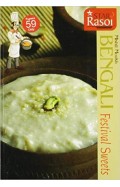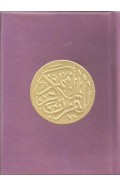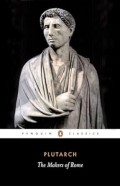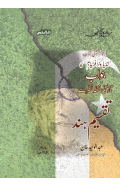- Home
- Books
- Categories
- Non Fiction
- Art. Design and Architecture
- Regime Change: New Horizons in Islamic Art and Visual Culture
Regime Change: New Horizons in Islamic Art and Visual Culture
By: Christiane Gruber
-
Rs 17,095.50
- Rs 18,995.00
- 10%
You save Rs 1,899.50.
Due to constant currency fluctuation, prices are subject to change with or without notice.
The articles in this volume were first presented at the Historians of Islamic Art Association’s (HIAA) seventh biennial symposium entitled ‘Regime Change’. The nine articles in this volume highlight some of the regimes of thought and changing trends that structure the field of Islamic art history. The authors present new research exploring the intentions of patrons, the agency of craftsmen and their responses to previous artistic production, thereby allowing artefacts and monuments to be set within their historical, social and artistic contexts. This fully illustrated volume looks at a wide range of topics from discussing the changes to Qur’an production due to dynastic and political regime changes in Sumatra and the Malay peninsula to changes in the role and status of designers and weavers making silk in Khurasan in the post-Mongol period; it explores Safavid art and architecture and how the rise of photography and new printing techniques shaped the production, exchange and transmission of images in Iran and Turkey.
The articles in this volume were first presented at the Historians of Islamic Art Association’s (HIAA) seventh biennial symposium entitled ‘Regime Change’. The nine articles in this volume highlight some of the regimes of thought and changing trends that structure the field of Islamic art history. The authors present new research exploring the intentions of patrons, the agency of craftsmen and their responses to previous artistic production, thereby allowing artefacts and monuments to be set within their historical, social and artistic contexts. This fully illustrated volume looks at a wide range of topics from discussing the changes to Qur’an production due to dynastic and political regime changes in Sumatra and the Malay peninsula to changes in the role and status of designers and weavers making silk in Khurasan in the post-Mongol period; it explores Safavid art and architecture and how the rise of photography and new printing techniques shaped the production, exchange and transmission of images in Iran and Turkey.
Regime Change: New Horizons in Islamic Art and Visual Culture
By: Christiane Gruber
Rs 17,095.50 Rs 18,995.00 Ex Tax :Rs 17,095.50
Zubin Mehta: A Musical Journey (An Authorized Biography)
By: VOID - Bakhtiar K. Dadabhoy
Rs 892.50 Rs 1,050.00 Ex Tax :Rs 892.50
The Origins of Political Order From Prehuman Times to the French RevolutioN
By: Francis Fukuyama
Rs 4,045.50 Rs 4,495.00 Ex Tax :Rs 4,045.50
Manning Up: How the Rise of Women Has Turned Men into Boys
By: Kay Hymowitz
Rs 845.75 Rs 995.00 Ex Tax :Rs 845.75
The Obama Syndrome: Surrender At Home War Abroad
By: Tariq Ali
Rs 1,100.75 Rs 1,295.00 Ex Tax :Rs 1,100.75
The Quest For Meaning: Developing A Philosophy Of Pluralism
By: Tariq Ramadan
Rs 1,185.75 Rs 1,395.00 Ex Tax :Rs 1,185.75
No similar books from this author available at the moment.
Bargain Fever: How to Shop in a Discounted World - Paperback
By: Mark Ellwood
Rs 1,147.50 Rs 2,295.00 Ex Tax :Rs 1,147.50
Rich World, Poor World: The Struggle to Escape Poverty
By: Ali A. Allawi
Rs 10,615.50 Rs 11,795.00 Ex Tax :Rs 10,615.50
The Art of Colour: The History of Art in 39 Pigments
By: Kelly Grovier
Rs 10,795.50 Rs 11,995.00 Ex Tax :Rs 10,795.50
Stag Dance: From the Bestselling Author of Detransition, Baby
By: Torrey Peters
Rs 4,495.00 Ex Tax :Rs 4,495.00
I Feel No Peace - Rohingya Fleeing Over Seas and Rivers
By: Kaamil Ahmed
Rs 5,690.75 Rs 6,695.00 Ex Tax :Rs 5,690.75
The Seven Deadly Sins Omnibus 10 (Vol. 28-30)
By: Nakaba Suzuki
Rs 5,395.50 Rs 5,995.00 Ex Tax :Rs 5,395.50
Kleptopia: How Dirty Money is Conquering the World
By: Tom Burgis
Rs 1,610.75 Rs 1,895.00 Ex Tax :Rs 1,610.75
From Russia with Blood: Putin’s Ruthless Killing Campaign and Secret War on the West
By: Heidi Blake
Rs 1,270.75 Rs 1,495.00 Ex Tax :Rs 1,270.75
The Summer Place: The Perfect Beach Read to Get Swept Away with This Summer
By: Jennifer Weiner
Rs 2,035.75 Rs 2,395.00 Ex Tax :Rs 2,035.75
Zubin Mehta: A Musical Journey (An Authorized Biography)
By: VOID - Bakhtiar K. Dadabhoy
Rs 892.50 Rs 1,050.00 Ex Tax :Rs 892.50
Regime Change: New Horizons in Islamic Art and Visual Culture
By: Christiane Gruber
Rs 17,095.50 Rs 18,995.00 Ex Tax :Rs 17,095.50














-120x187.jpg?q6)





-120x187.jpg?q6)






























